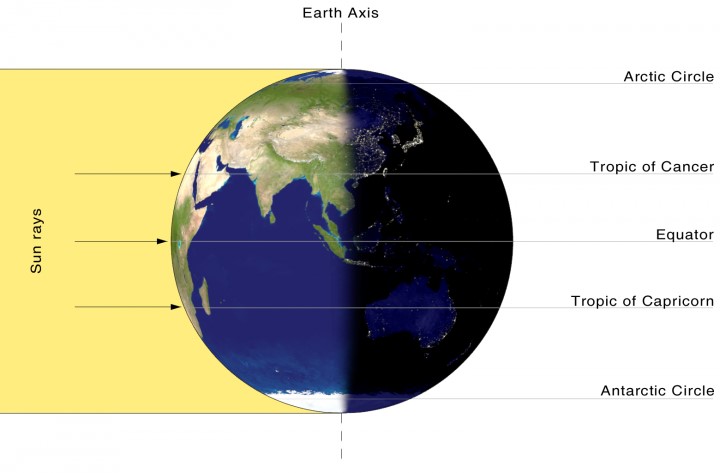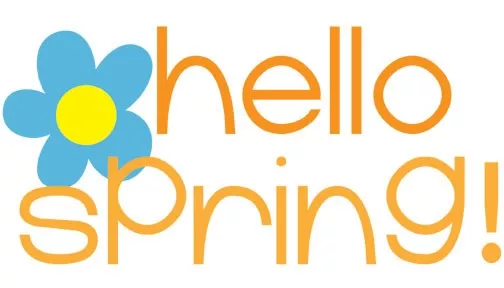Mar 20, 2018
Image: Welcome Spring - clipartpanda.com
The Spring Equinox (also called the March Equinox or Vernal Equinox) falls on Tuesday, March 20, 2018 at 12:15 P.M. EDT according to the Old Farmer's Almanac. This event marks the astronomical first day of Spring in the northern hemisphere.
What Is An Equinox?
At the Spring Equinox, the amount of daylight and darkness is approximately equal. The name Equinox comes from Latin words which mean “equal night”—aequus (equal) and nox (night).
Enjoy the increasing sunlight hours, with earlier dawns and later sunsets.
On the Equinox, Earth’s two hemispheres are receiving the Sun’s rays about equally.
The tilt of the Earth is zero relative to the Sun, which means that Earth’s axis neither points toward nor away from the Sun. (Note, however, that the Earth never orbits upright, but is always tilted on its axis by about 23.5 degrees.) If you were standing on the equator, the Sun would pass directly overhead on its way north. Equinoxes are the only two times a year that Sun only rises due east and sets due west for all of us on Earth.

Image: Earth's divisions - Old Farmer's Almanac
Spring Equinox Ancient Markers
Scientific explanation aside, our ancestors were more connected to the Sun than we are today. They observed its pathway across the sky; they tracked how the sunrise, sunset, and day length changed, using the Sun (and Moon) as a clock and calendar.
There are many ancient sites that mark the Equinoxes (and solstices).
At Chichen Itza in Mexico, Mayans built a huge pyramid around the year A.D. 1000. The play of the Sun’s light on it signals the beginning of the seasons. On the Spring Equinox, the light pattern looks like a snake. Mayans called this day “the return of the Sun Serpent.”
Spring Equinox FAQs
Question: Is the Spring Equinox really the first day of Spring?
Answer: Yes—and no. Let us explain:
Astronomically speaking, the first day of Spring is marked by the Spring Equinox, which falls on March 19 or 20 every year. This date signals Spring’s beginning in the Northern Hemisphere (whereas it announces fall’s arrival in the Southern Hemisphere). The Equinox happens at the same moment worldwide, even if our clock times reflect a different time zone.
Meteorologically speaking, the official first day of Spring is March 1 (and the last is May 31). Weather scientists divide the year into quarters to make it easier to compare seasonal and monthly statistics from one year to the next. The meteorological seasons are based on annual temperature cycles rather than on the position of Earth in relation to the Sun, and they more closely follow the Gregorian calendar. Using the dates of the astronomical Equinoxes and solstices for the seasons would present a statistical problem, as these dates can vary slightly each year.
Question: Are day and night truly equal on the Equinox?
Answer: No, day and night are not exactly equal at the Equinox for two reasons: First, daytime begins the moment any part of the Sun is over the horizon, and it is not over until the last part of the Sun has set. If the Sun were to shrink to a star-like point and we lived in a world without air, the Spring and fall Equinoxes would truly have ‘equal nights.’
Question: According to folklore, you can stand a raw egg on end on the Equinox. Is this true?
Answer: Folklore or not, this egg trick sounded like fun to us. One Spring, a few minutes before the vernal Equinox, several Almanac editors tried this trick. For a full workday, 17 out of 24 eggs stood standing. Three days later, we tried this trick again and found similar results. Perhaps 3 days after the Equinox was still too near. Perhaps the Equinox has nothing to do with it. Perhaps we just don’t like to take ourselves too seriously! Try this yourself and let us know what happens.
Spring Equinox Show
The vernal Equinox signals the beginning of nature’s renewal in the Northern Hemisphere!
Worms begin to emerge from the earth. In fact, the March Full Moon is called “The Full Worm Moon” for this reason.
Notice the arc of the Sun across the sky as it shifts toward the north. Birds are migrating northward, along with the path of the Sun.
Speaking of birds, did you know that the increasing sunlight is what triggers birds to sing? Cool, eh?
Trees, shrubs, and flowers are sensitive to temperature and day-length, too! Since ancient days, people have used them as indicators of when the weather is right for planting. For example: Blooming crocus are your cue to plant radishes, parsnips and spinach.
Of course, the longer days bring warmer weather! Both we and the animals around us strip off our clothes and heavy coats!
Ready, set, plant! March is time to start gardens and sow seeds in many regions.
Spring Verse
One swallow does not make a Spring.
Bluebirds are a sign of Spring; warm weather and gentle south breezes they bring.
In Spring, no one thinks of the snow that fell last year.
Don’t say that Spring has come until you can put your foot on nine daisies.
Spring-time sweet!
The whole Earth smiles, thy coming to greet.
Share this article with friends!
Tags:
#spring#equinox,#first#day#of#spring,#starzpsychics.com,#starz#advisors


